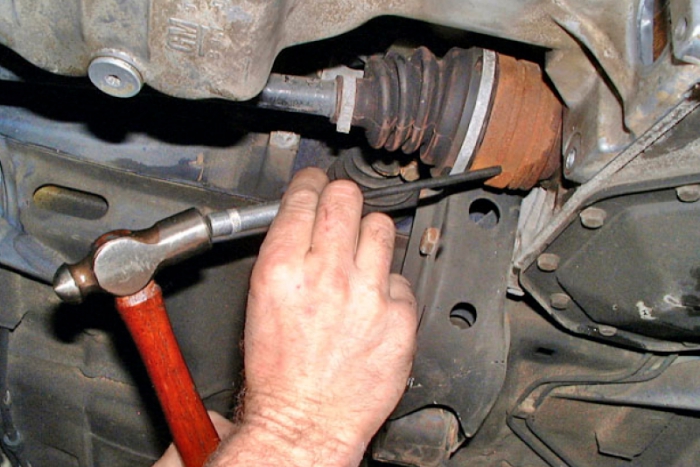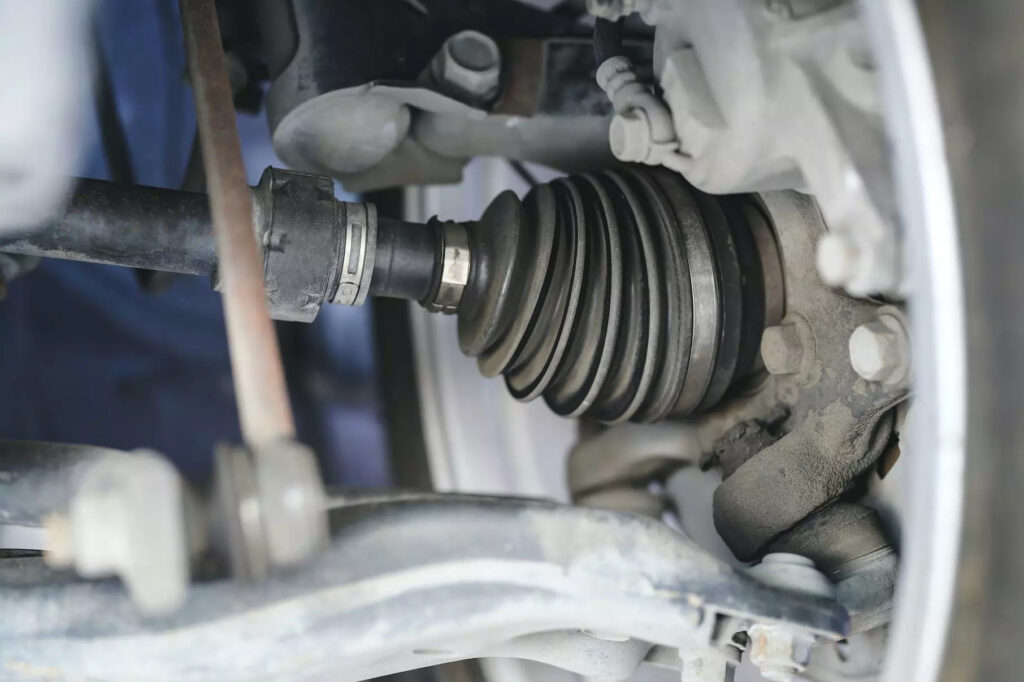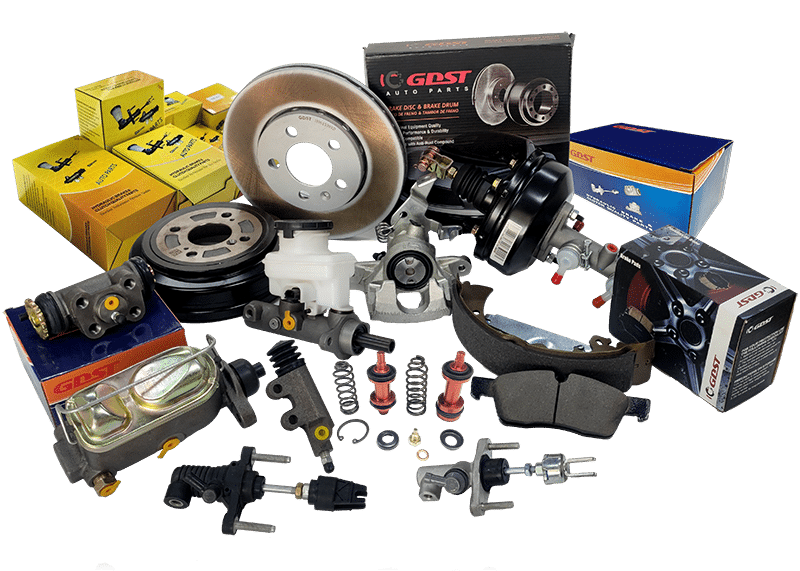Your customer says, “The car just made a weird clunk and stopped moving.” If you’ve heard this before, you’re probably in the drive shaft business. “How to replace drive shaft .” isn’t the hardest task, but doing it right takes attention to detail. In this post, we’ll walk through the full replacement process—so you can do it quicker, smoother, and more professionally.
How to Replace a Drive Shaft: Step-by-Step
Replacing a drive shaft involves lifting the vehicle, removing the universal joints or bolts at both ends, sliding the old shaft out, and installing a new one with proper alignment and torque. Always ensure safety procedures and use the right tools to avoid damaging components.
Here’s how to do it, step by step:
Step1: Prep and Safety First

Tools Needed: Wheel chocks, battery wrench, gloves, eye protection
- Choose a flat surface and place wheel chocks to stop any movement.
- Put the gear in park (or first for manuals) and secure the handbrake.
- Disconnect the battery’s negative terminal to avoid short circuits.
- Wear gloves and goggles—things can get messy under the car.
Tip: Before diving in, lay the new shaft next to the old one. Check if the length, ends, and splines are the same.
Step2: Lift the Vehicle and Secure It

Tools Needed: Hydraulic floor jack, jack stands
- Jack up the vehicle from the designated lift points (check the owner’s manual).
- Place jack stands under the frame or axle—never rely on the jack alone.
- Before crawling under the car, you need to gently rock the body to make sure it is stable.
Caution: Double-check that the drive shaft is not under rotational tension (e.g., due to AWD or manual gear left in neutral).
Step3: Identify, Mark, and Remove the Drive Shaft

Tools Needed: Marker or chalk, socket set, breaker bar, U-joint removal tool, drain pan (if slip yoke)
- Locate the drive shaft between the transmission (or transfer case) and differential.
- Use a marker to mark the flange position and shaft orientation. This helps preserve proper balance when reinstalling.
- Remove the bolts or straps holding the U-joints or flanges in place.
- For U-joint clips, gently tap them out with a punch or screwdriver.
- After loosening the bolts, you will need to slide the shaft to the back end and then carefully pull it out of the transmission.
Tip: If your vehicle has a slip-yoke connection, transmission fluid may leak—be ready with a drain pan or tail plug. Take a photo before removing anything—it’s a great backup for reinstallation.
Step4: Prepare and Install the New Drive Shaft

Tools Needed: Clean rag, grease, torque wrench, thread locker (optional)
- Clean all contact points — wipe off dirt and old grease from flanges and splines.
- Grease the splines lightly if needed; don’t overdo it.
- Slide in the new shaft and align it to your earlier markings. It should fit smoothly.
- Hand-tighten all bolts first, then torque to spec (usually 60–80 ft-lbs).
- Use a thread locker for added security, especially for high-vibration vehicles.
- Spin the shaft by hand before lowering the car — it should rotate smoothly.
Step5: Final Checks and Test Drive Shaft

Tools Needed: Torque wrench, flashlight
- Recheck all bolts with a torque wrench — no loose ends.
- Reconnect the battery if disconnected earlier.
- Start the engine and shift through gears (P-R-N-D) while stationary. Listen for clicks or clunks.
- Take a short test drive — check for vibration, unusual sounds, or leaks.
- Do a quick inspection after driving: check the shaft position, bolt tightness, and fluid seals.ve to listen for unusual noises or vibrations.
How Long Does It Take to Replace a Drive Shaft?
If you’re experienced, you can expect to replace a drive shaft in about 1.5 to 2 hours. For newer techs or home mechanics, it might take longer, especially if bolts are rusted or if you’re working on a complex 4WD system. Some cases might require torching stuck bolts or using pullers. This is also good info to pass on to customers. It helps manage their expectations and builds trust.
Replacing a drive shaft may sound simple, but doing it right takes precision. In this guide, we’ve covered everything from prep to install and final testing—step by step. If you’re in the drive shaft business, knowing how to replace one yourself doesn’t just help you serve better—it builds trust, reduces callbacks, and proves that you’re not just selling parts, but solving real problems. The more confident and skilled you are, the more your customers will rely on you.



